Video on development of 6-12 months
Development from 6 to 8 Months – Cantonese version with English subtitle only
Heading: Development from 6 to 8 Months
Scene: Two babies lying prone and support their bodies using their palms.
Narrator: By the end of the seventh month, when lying on his tummy, your baby can push his head and body up with his palms.
Scene: The baby sits on the floor with supports from his own hands.
Narrator: He can sit with the support of his hands,
Scene: The mother holds his baby up to stand on the sofa.
Narrator: and support his full weight of his body with his legs when being held upright.
Scene: The baby sits on the sofa and reaches out his hand to grasp a toy in front of him. He then picks up the toy and play with it. Another baby sits in his stoller playing with a toy. He explores the toy by passing it from one hand to another.
Narrator: He reaches out his hands to grasps toys, explores them with both hands, or passes them from one hand to the other.
Scene: The baby sits on his high chair carefully explores the toys in his hands. Another baby sits in his stroller and recognizes and looks at his mother and sister coming over to him from a distance.
Narrator: As for vision, your baby can fixate and follow small objects at near, and recognize familiar people readily at a distance.
Scene: The baby quickly turns his head to find his mother when he hears her calling his name from one side.
Narrator: As for hearing, he turns his head readily in response to a voice produced on either side.
Scene: The baby carefully examines and explores different parts of the toy in his hands.
Narrator: Considering his cognitive development, he continuously absorbs information from the surroundings and applies it to his day-to-day activities.
Scene: The baby plays with a toy in his hand. He shakes it and hears some noise. He finds this interesting. He then repeats the same action repeated to make out more sounds.
Narrator: He also begins to grasp the concept of “cause and effect”. For example, shaking a rattle can make it sound. Realising that he can cause these interesting reactions, he will continue to experiment with other ways to make things happen.
Scene: The baby sits in his stroller is playing with a toy in his hands. The toy suddenly drops to the floor. The baby quickly follows and looks where it has fallen, and tries to reach for it. Another baby is playing hide-and-seek with his mother. He pulls down the towel to find his mother hiding behind it.
Narrator: Before then, your baby assumed that the things that he couldn't see just didn't exist, and would not bother looking for them. But now, he begins to acquire the concept of “object permanence”, realizing that things hidden do not vanish after all, he will try to look for them.
Scene: The baby cries when she can't see her mother around. She calms down quickly once her mother comes and picks her up. Another baby stands in front of a mirror. He is interested in his own image in the mirror and touches it with his hands.
Narrator: As for social development, your baby will start to develop anxiety towards strangers, but he shows great interested in his own image in the mirror.
Development from 8 to 12 Months – Cantonese version with English subtitle only
Heading: Development from 8 to 12 Months
Scene: Different babies crawling here and there on the floor.
Narrator: From the eighth to twelfth months, your baby become increasingly mobile. He likes to move about and explore here and there. You can give him more opportunities to make new discoveries. This helps developing his potential and enhancing his self-confidence.
Scene: The baby sits steadily on the floor, turning his body from side to side without falling. Another baby leans forward to pick up a toy.
Narrator: During this period, your baby can sit well on the floor, and can turn his body around from side to side without falling.
Scene: A baby sits on the floor, leans forward and then changes to a crawling position. She starts crawling around skillfully on her hands and knees. Another baby just sits on the floor trying to shuffle forward on her bottoms.
Narrator: He can also change different positions, for example, changing from sitting to crawling. Some babies crawl on their hands and knees, while some shuffle along on their bottoms.
Scene: A baby boy crawls towards the sofa and pulls himself up to stand by holding onto the sofa. He then cruises a few steps by holding onto it. A baby girl stands without holding onto any support and then turns to start walking unsteadily for a few steps.
Narrator: He can stand up holding onto furniture, and then cruise several steps. Sometimes he can stand alone or even take a few steps on his own.
Scene: A baby boy uses his fingers to rake and pat the buttons on a toy guitar. Another baby boy pokes his index fingers on the keys of a toy piano to make noises.
Narrator: For his hands and fingers skills, he likes to press and poke with his fingers.
Scene: A baby boy uses his thumb and index fingers to pick up toy bricks from the floor and a bowl. Another baby boy puts the toy scissors his mother gave him into a toy box.
Narrator: He is able to pick up tiny objects using the thumb and index finger, and take toy out and into containers.
Scene: A baby boy turn a bowl over to uncover a toy brick hidden underneath it.
Narrator: Concerning cognitive development, he can now find hidden toys easily.
Scene: The mother is feeding her baby on a high chair. The baby puts a toy spoon into the mother's mouth to imitate feeding her. The baby boy puts a comb on the mother's head to comb her hair. He then puts the toy phone to his mouth and babbles into it.
Narrator: He understands the correct use of some daily objects, like using a comb to comb hair, or babbling into a telephone.
Scene: A baby girl points with her index finger to the far side, indicating something interesting to the others. Another baby boy vocalizes some sounds like “Ah”, “Ba” to his mother. The mother is playing with her baby boy on the sofa. The boy vocalizes a chain of different sounds as if he is talking to his mother.
Narrator: For language development, he would indicate his needs by gesture, pointing with the index finger or even using words. He vocalizes using long babbles or jargons.
Scene: The mother takes out her hand and looks at the baby and says “give it to Mum”. The baby boy responds by putting the toy in her hand. The mother holds the baby and say goodbye to her friend, the baby responds by waving bye-bye. The father asks his son to clap hands, the baby claps his hands. A mother hands a toy to his son, the baby shakes his head.
Narrator: He can respond to simple phases with gesture cues such as: “Give it to Mom”, “Bye-bye”, “Clap your hands”. He would shake his head for “No”.
Scene: The baby throws his toys. His mother then looks at him and says “No” to him. The baby stops and looks at his mother.
Narrator: As for his social development, he likes testing out parent's responses to his behavior.
Scene: A baby boy plays on the floor. He cries and throws his toys all over in a mess. The mother comes over, talks to him and teaches him how to pick up the toys patiently. Then, he calms down and starts tidying up with his mother.
Narrator: During this period, try your best to increase your tolerance of the level of mess that he is going to create. Observe patiently and you will find out what he is interested in. Spend more time playing and talking with your baby, to help them learn how to play nicely.
Both nature and nurture affect every child's development. While nature is important in determining your baby's capabilities and abilities, the role of a nuturing environment is of equal importance in your baby's learning and emotion development.
Development is a continuous process and has a certain sequence that children would go through. However, parents should remember that every child is unique. Children have their own pace in development and varied in their abilities. If you are unduly concerned, talk to your doctors or nurse.
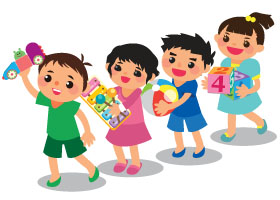
What you can do to help your 6 to 9 month-old baby's development
What babies can do
What you can do
I can change my positions freely!
Play with me!
I can roll over when lying down
I can sit up with some support on my back or supporting myself with my hands for a short while
Play various physical activities with me. Don't put me in the stroller, high chair or baby carrier for long time!
You can play toys, read picture books and play hide-and-seek with me while I am sitting with support of a pillow, I don't need screen devices
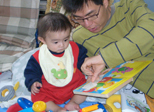
I can support the full weight of my body when being held upright

You can let me stand with support on your lap and sing and dance with me
Most of the babies at my age learn to crawl but not every one of us can
Let me sit and crawl on a soft mat
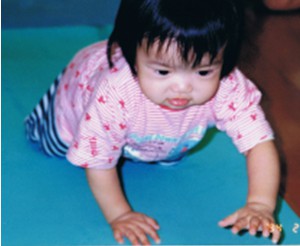
I can stand by holding onto the bedside. This is an important step before I learn to walk
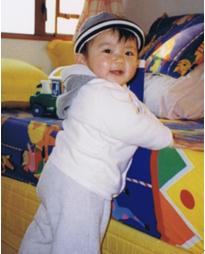
You can put some toys on the sofa to encourage me to stand
My eye-hand coordination has improved
Give me suitable toys to play
I like exploring objects with both hands and putting them into my mouth
I can transfer objects from one hand to another with ease
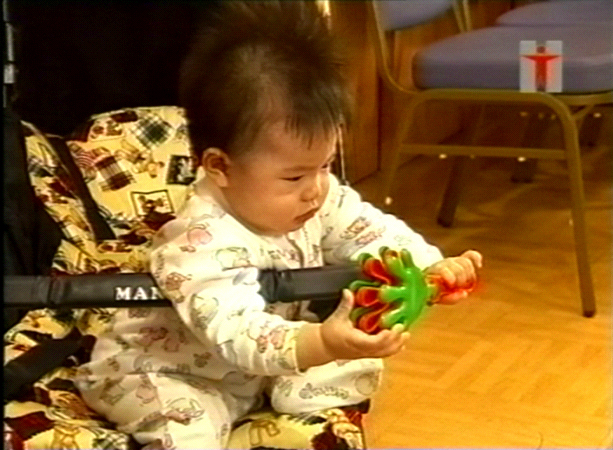
I started to pick up small objects before my eyes using my thumb and fingers
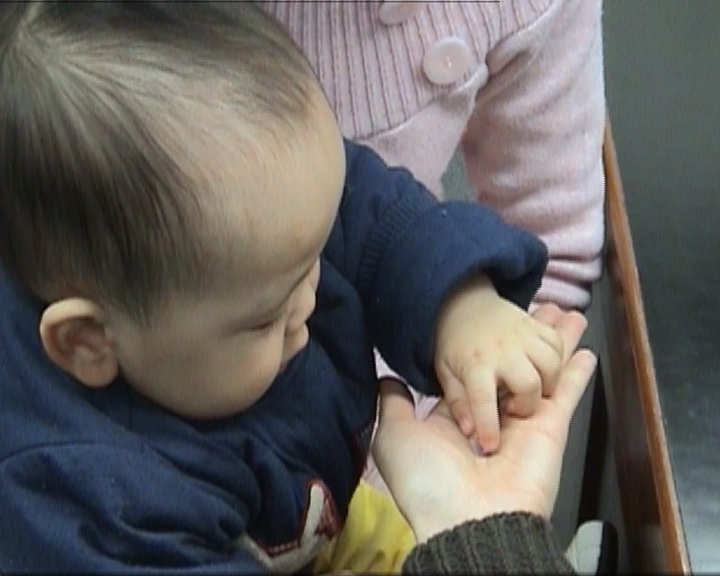
Give me toys, e.g. Activity Board, that can make sounds and encourage different types of finger and hand manipulation such as pushing, banging and sweeping
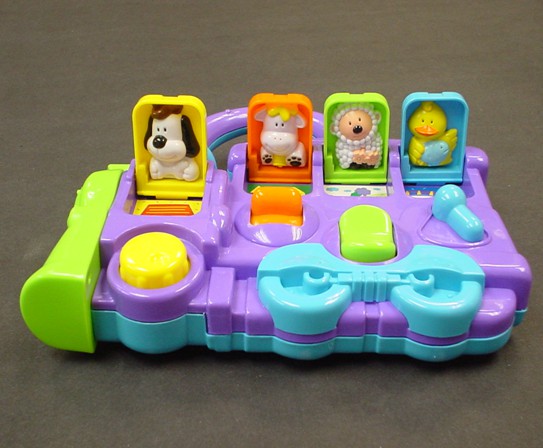
Toys like drum, piano and phone are good toys that you can play with me. These toys produce different sounds that I can imitate and playing with them enhance my eye-hand coordination
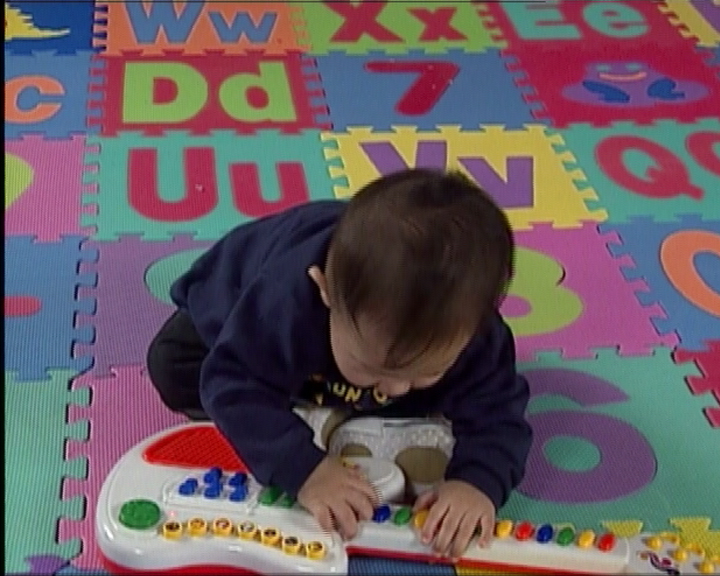
I start to understand words
Teach me how to talk
I begin to know my name! I can respond to you if you call my name
Call me by name instead of just calling me “baby”
I begin to understand words you often say to me, e.g. “milk”, “no”
Talk to me. Tell me about names of different objects and things you are doing
Start to build up my liking for books by giving me plastic or cloth picture books to play with

I can make sounds like “Da”, “Ba” and “Ka” when trying to talk to you
I will scream or shout to express my feelings when I am excited or irritated
Respond to my babbling sounds.
I can recognize and understand more
Play games with me
I begin to know what is “cause and effect”. I know what I do will lead to certain results. e.g. the rattle will make a noise if I shake it
Let me play with toys that require simple operations, e.g. toys that elicit noises or will pop out when I press or stroke with my hand. Activity board can be one of them
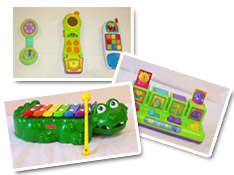
I will try to prove my wonderful discovery by repeating the same activity over and over
Bear with me when I repeat an action over and over
I start to have the concept of “object permanence”; I understand that objects have not disappeared when they are out of my sight. I'll try to look for it
Even if you are not around me, I miss you always
I will love playing treasure hunt with you, e.g. make me find something that you hide or cover
You can also play hide-and-seek with me – hiding your face into your palms shortly and reappear behind them. It will enhance my sense of security and reassure me that even if you disappear, you will reappear again
I can express my emotions better!
Pay attention to my emotional responses!
I am scared of strangers
Is your baby afraid of strangers or being too clingy?
Heading: Is your baby afraid of strangers or being too clingy?
Scene: Visitors paying a visit to the baby, baby's parents and grandmother.The baby cried initially, then gradually allows the visitors to get closer and contact her with the company of her caregivers.
Narrator: At around 6 months of age, babies would have established an intimate relationship with their parents or caregivers. By this time they may also feel uneasy and scared when meeting strangers.
Mom: Don't be afraid. Mummy is right here.
Subheading: Mixing with strangers gradually
Dad: So sorry. She is afraid of strangers recently. Please give her some time to warm up
Narrator: Babies' responses to strangers vary. Be sensitive to your baby's reactions towards strangers. If she is anxious, don't make her interact with them right away. Staying by her side to ensure her that she is safe and let her be familiar with the visitor gradually.
Scene: Baby crying when mother stays away from her. Mother then tidies up the house next to her then gradually move farther.
Sub-heading: Enhancing sense of security
Narrator: Starting from around 6 months old, your baby likes to stay close with you and may get clingy. You can place your baby in a safe spot around you. Keep talking to her. If she settles well you may talk less. Move farther away from her if she doesn't look for you. With your patience and time, using this gradual approach helps your baby feel secure.
Sub-heading: Entrusting to a familiar babysitter
Scene: Parents bring baby to the grandma's place. They give comforters to grandma and wait till baby settles down before they leave.
Narrator: At times, you may need to leave your baby to a babysitter. Find a reliable babysitter who is familiar to your baby. Prepare a hanky or toys which your baby is attached to and leave them by her side as comforters. If your baby has not warmed up with the babysitter, stay for a little longer until she settles down before you leave. Always say “goodbye” to your baby when you leave. Don't sneak out because your baby will feel insecure if you disappear suddenly. Don't push your baby away if she clings to you upon separation. You should hand her to the babysitter calmly and firmly. Fear of strangers and separation anxiety are natural phenomena during the course of your child's development. These fears, however, will disappear gradually when babies are around 18 months old.
Do not let strangers carry me right away. Stay by my side. Help me accept the stranger gradually by allowing me to observe first. Comfort me when I need you
I have already established an intimate and trusting relationship with you. If you have to leave me, I will be scared, cry and will not let you go
The fear of strangers and separation will get more intense during this period. Nonetheless, they will get better when I am around 18 months old
It is not surprising if my same-aged peers do not have the fears of separation and strangers like me. After all, we are all unique individuals with difference in temperament!
Do not leave me without saying goodbye or pushing me away. It will foster my sense of security when I know that you are just leaving for a while and will come back soon
Find me a babysitter I like. If you have to leave for a short while, the babysitter can distract me with something to my interest. The babysitter can calm me down when you are not around
I can express my feelings with more varied facial expressions, tone of voice and gestures
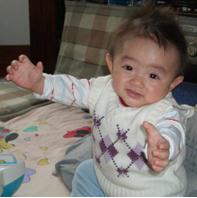
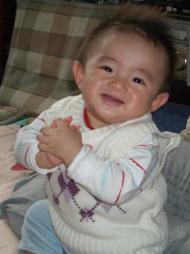
Spend time to play with me and observe my emotional responses during play

I enjoy imitating adults' actions
Let me imitate some simple actions of yours like Clapping hands and finger games. This can promote my social skills
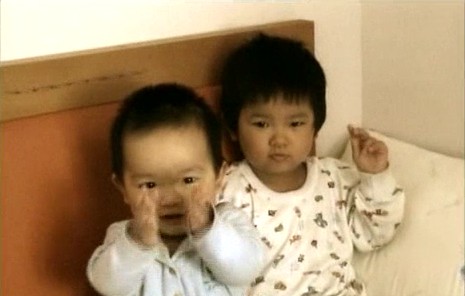
What you can do to help your 10 to 12 month-old baby's development
What babies can do
What you can do
I start to walk
Create a safe environment for learning to walk
I can pull myself up and stand by holding onto the rails of the crib.Soon I shall walk
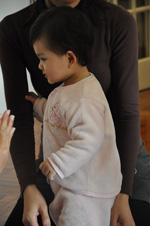
Play various physical activities with me
Baby walker is not suitable for learning how to walk. You can let me try walking by supporting me with your hands, let me hold onto and push the handle of a toddler's cart or a stable chair with weight
I can crawl now. I can also move freely by holding onto the furniture or your hands
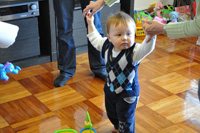
Let me crawl and cruise around furniture freely within your sight in a safe home environment
By my first birthday, I can stand by myself briefly. Some of us, the 1-year-olds, can even walk for a short distance by themselves or holding a hand of their parents!
You can leave me in the play pen with safety precautions ensured when you have to leave me alone for a while. Don't put me in stroller, high chair or baby carrier for long time!
Home safety
Title: Home Safety
Narrator: Home safety.
Photo: A girl (12 – 18 months old) is bringing some toys to her dad.
Photo: A boy (12 – 18 months old) is running in the living room while his parents are looking at him.
Photo: A boy (18 – 24 months old) is climbing up the sofa
Photo: A girl (18 – 24 months old) is pulling the curtain ropes
Narrator: Your energetic child loves to run and jump around! However, he has no idea of any danger around him. You should stay alert and check home safety measures regularly so as to prevent any possible accidents.
Heading: Ensuring Your Child's Safety
Narrator: Ensuring your child's safety.
Sub-heading: Don't leave your child alone at home
Photo: Daddy is going out, his son (5 years old) and daughter (3 years old) are saying goodbye to him. Big cross.
Photo: Daddy is going out, Mum, his son (5 years old) and daughter (3 years old) are saying goodbye to him.
Narrator: To ensure safety, don't leave your children alone at home or to the care of older children. Remember, there should be an adult with them at all times.
Sub-heading: First-aid kit
Photo: First-aid Kit
Narrator: Keep a first-aid kit at home in case any minor accidents occur. It should include:
Sub-heading: Alcohol swabs
Photo: Alcohol swabs
Narrator: Alcohol swabs: for sterilising both hands before performing first-aid treatment.
Sub-heading: Gauze roller bandage
Photo: Gauze roller bandage
Sub-heading: Elastic roller bandage
Photo: Elastic roller bandage
Narrator: Gauze or elastic roller bandage: to bandage a wound and stop bleeding with applied pressure.
Sub-heading: Triangular bandage
Photo: Triangular bandage
Narrator: Triangular bandage: to wrap injured areas, support or fix broken limbs.
Sub-heading: Round-ended scissors
Photo: Round-ended scissors
Narrator: Round-ended scissors: to cut adhesive tape, bandages or clothing when necessary.
Sub-heading: Disinfectant
Photo: Disinfectant
Photo: Saline Solution
Narrator: Disinfectant: for disinfecting and cleaning wounds.
Sub-heading: Sterile dressing set
Photo: Sterile dressing set
Photo: An opened sterile dressing set
Narrator: Sterile dressing set: to clean and cover wounds.
Sub-heading: Sterile gauze pad
Photo: Sterile gauze pad
Sub-heading: Non-woven sterile gauze pad
Photo: Non-woven sterile gauze pad
Narrator: Sterile gauze pad: to cover wounds.
Sub-heading: Sterile adhesive bandage
Photo: Sterile adhesive bandage
Narrator: Sterile adhesive bandage: to cover small wounds.
Sub-heading: Plaster
Photo: Plaster
Narrator: Plaster: to fix a dressing
Sub-heading: Disposable gloves
Photo: Disposable gloves
Narrator: Also, disposable gloves
Sub-heading: 3-Ply surgical masks
Photo: 3-Ply Surgical masks
Narrator: and 3-ply surgical masks.
Photo: A girl (5 years old) cuts her finger and asks dad and Mum for help.
Photo: Mum puts on a bandage for her and the first-aid kit is next to her.
Narrator: You should equip yourselves with first-aid skills. When your child gets hurt, you may help your child with the materials in the first-aid kit and take him to the doctor if required. If it is serious, take your child to hospital promptly.
Heading: Living Room Safety
Narrator: Living room safety.
Photo: Living room
Narrator: Furniture in the living room may also cause injuries.
Sub-heading: Choose furniture without sharp edges
Photo: Round table
Narrator: Consider furniture without sharp edges as your first choice.
Sub-heading: Cover sharp edges with corner protectors
Photo: Table with corner protectors
Photo: Drawer with corner protectors
Narrator: If there are sharp edges on the furniture, cover them with corner protectors.
Photo: Glass surface. Big cross.
Photo: Tablecloth. Big cross.
Photo: Table mat. Big cross.
Narrator: You should avoid using furniture with fragile glass surfaces. Don't use tablecloths or table mats; everything will fall off if your child pulls on them.
Sub-heading: Use folding tables or chairs with safety lock
Photo: Folding Table
Photo: Safety lock of folding tables (1), (2)
Narrator: Avoid using folding tables or chairs unless they have a safety lock.
Sub-heading: No stacking
Photo: Plastic boxes are stacked up. Big cross
Photo: Short ladder. Big cross.
Narrator: Don't leave ladders around or stack items, so as to prevent children from climbing and falling down.
Sub-heading: Place sofas against the wall
Photo: A sofa is placed against the wall
Photo: A boy (18 – 24 months old) climbs onto the sofa. Big cross.
Narrator: Sofas should be placed against the wall, or else your child may climb over the back of the sofa and fall down.
Sub-heading: Add railings to balconies
Photo: A balcony with railings
Photo: Door to balcony is opened. Big cross.
Photo: Door to balcony is locked
Narrator: To ensure the safety of your child, balconies should have railings and the balcony doors should be locked at all times.
Sub-heading: Install and lock window guards
Photo: A window guard with a ruler
Photo: Window guards
Photo: Window guards which can be opened
Photo: A locked window guard (1)
Photo: A locked window guard (2)
Narrator: Install standard window guards on all windows. Remember, to keep the window guards locked at all times.
Sub-heading: Tie up curtain cords
Photo: Close-up of the tied-up curtain cords
Photo: A curtain cord
Photo: A girl (18 – 24 months old) is pulling the curtain cord. Big cross.
Narrator: Keep curtain cords out of your child's reach and remember to tie them up. Your child could be strangled and suffocated if her neck gets caught in the cords.
Sub-heading: Door stoppers
Photo: A door stopper fixes the position of a half-opened door
Sub-heading: Magnets
Photo: Magnet fixes the position of an opened door
Narrator: Stop opened doors from swinging with door stoppers or magnets.
Sub-heading: U-shaped door stoppers
Photo: A U-shaped door stopper prevents the door from shutting
Narrator: The U-shaped door stoppers can help protect your child's fingers from being pinched in the door.
Sub-heading: Socket protective covers
Photo: Socket is covered by a protective cover
Narrator: Use protective covers for sockets.
Sub-heading: Put away electric extension units
Photo: An electric extension unit is on top of a cupboard
Narrator: And keep electric extension units out of your child's reach.
Sub-heading: Put safety covers on electric fans
Photo: A safety cover is on an electric fan.
Photo: Close-up of the safety cover.
Narrator: There must be a safety cover on an electric fan.
Sub-heading: Keep the fan away from children's reach
Photo: An electric fan is on top of a cupboard
Narrator: Also, make sure that your child cannot reach the fan.
Sub-heading: Store matches and lighters properly
Photo: A box of matches and lighter
Photo: matches and lighter placed in a drawer
Narrator: Store matches and lighters properly in a drawer, out of the reach of children.
Sub-heading: Fasten seatbelts
Photo: A baby is sitting on the stroller, with the seatbelt fastened.
Photo: A baby is on the high-chair, with seatbelt fastened and locks secured.
Photo: The seatbelt is fastened.
Narrator: Fasten the seatbelt when your child is sitting in high chairs or strollers and secure the booster seat.
Sub-heading: Safe use of iron
Photo: Mum stops her son (5 years old) from approaching her when she is ironing clothes.
Narrator: Children should not be around when you are ironing. It is dangerous if your child touches it.
Photo: An iron is placed on an ironing board. Big cross.
Narrator: When you finish using an iron, don't leave it around. Put it away properly.
Sub-heading: Keep the house clean and tidy
Photo: Mum is tidying up the house.
Narrator: Keep your house clean and tidy. Don't scatter things around or your child may stumble over them.
Heading: Kitchen Safety
Narrator: Kitchen safety.
Photo: A messy kitchen. Big cross.
Photo: A tidy kitchen.
Narrator: A kitchen is also a place full of danger.
Sub-heading: Install a gate
Photo: A gate at the kitchen door
Photo: A boy (18 – 24 months old) is at the kitchen door gate.
Narrator: Install a gate at the kitchen door to prevent your child from entering the kitchen.
Photo: In the kitchen, Mum is carrying her baby. Big cross
Narrator: Also, don't carry your child in the kitchen. Children can reach out and grab things.
Sub-heading: Turn handles of cookware inward
Photo: The handle of cookware points outward on the stove. Big cross.
Photo: The handle of cookware points inward on the stove.
Narrator: The handles of cookware should point inward on the stove. It can prevent your child from tugging it and being scalded accidentally.
Sub-heading: Cover the stove
Photo: A stove is covered.
Narrator: If your stove has a cover, use it when the stove is not in use.
Sub-heading: Put away dangerous items
Photo: Knives and scissors are on the rack which is placed at a far corner on the kitchen counter.
Photo: Electric kettle is placed against the wall on the counter.
Photo: First-aid kit is put up high.
Photo: Detergents are put inside a cupboard.
Narrator: Put all dangerous items, including sharp utensils, medications, electric kettles, hot water flasks and detergents, out of the reach of your child.
Photo: Detergent is stored in soft drink bottle. Big cross.
Narrator: Don't use any drinking bottles to store detergents or other chemicals. It is dangerous if children mistake them as drinks!
Heading: Bathroom Safety
Narrator: Bathroom safety.
Photo: Tidy bathroom
Photo: Untidy bathroom.
Narrator: Take safety precautions in the bathroom too. It is full of traps.
Sub-heading: Keep bathroom door closed
Photo: Bathroom door is closed
Narrator: Always keep the bathroom door closed to prevent your child from entering the bathroom.
Sub-heading: Keep the toilet covered
Photo: Toilet cover is on
Narrator: Besides being hygienic, keeping the toilet covered can also prevent your child from sticking his head into the toilet bowl.
Sub-heading: Keep bathroom clean and dry
Photo: Water on bathroom floor. Big cross
Photo: A dry bathroom
Narrator: Keeping the bathroom dry can protect your child from slipping on the floor.
Sub-heading: Put an anti-slip mat in the bathtub
Photo: An anti-slip mat in the bathtub
Narrator: If you are using a bathtub, put an anti-slip mat inside.
Sub-heading: Put away containers with water
Photo: A bucket is placed on the bathroom floor. Big cross.
Narrator: Don't leave containers filled with water around. Children may drown if they fall into it.
Sub-heading: Use a plastic baby bath
Photo: Baby is bathing in a plastic baby bath
Narrator: Use a plastic bath to bathe your baby in the bath tub.
Photo: Mum is bathing her baby.
Narrator: Never leave your baby in the bath alone, even if it is just for a brief moment.
Sub-heading: Have all items ready
Photo: Mum has all the bathing items needed.
Narrator: Therefore, have all items ready for bathing beforehand.
Sub-heading: Always add cold water before hot water
Photo: Putting cold water into bath basin.
Narrator: When preparing a bath for your child, always put cold water in before hot water.
Sub-heading: Test water temperature with your elbow
Photo: Mum is testing water temperature with her elbow
Narrator: Then, test the water temperature with your elbow before bathing your baby.
Heading: Bedroom Safety
Narrator: Bedroom safety.
Photo: Bedroom (1)
Photo: Bedroom (2)
Narrator: Make sure your child has a safe sleeping environment to protect him from risks.
Sub-heading: Put the cot near your bed
Photo: A cot is next to the parents' bed
Narrator: If possible, let your baby sleep in his cot and put the cot next to your bed.
Sub-heading: Appropriate mattress size
Photo: The size of the mattress fits the size of the baby cot.
Narrator: The mattress should fit the size of the baby cot. If there is a gap, the baby's tiny head may get trapped and he may suffocate as a result. There should not be any soft objects or loosely tucked sheets on the bed. A baby can sleep well without a pillow.
Sub-heading: Lock the bars of the cot
Photo: A baby is sleeping in the cot with bars locked
Narrator: Make sure that the bars are locked to avoid your baby falling onto the floor when in the cot.
Sub-heading: Distance between vertical bars should not exceed 6cm
Photo: Showing the distance between the vertical bars is less than 6cm
Narrator: The distance between the vertical bars should not exceed 6 cm or 2.5 inches. Babies can stick out their heads and get stuck if the bars are too wide apart.
Sub-heading: Height of rails should be higher than 3/4 of your child's height
Photo: A toddler is standing in the cot
Photo: The height of the rails is no less than 3/4 of the height of the baby
Narrator: The height of the cot rails should be higher than 3/4 of your baby's height.
Photo: A baby is sitting on the sofa alone. Big cross.
Photo: A baby is alone on a bed without guards. Big cross.
Narrator: Never leave your baby alone on the sofa or bed without guards, even if it is just for a brief moment.
Photo: A curtain cord is close to the baby cot. Big cross.
Narrator: Make sure that the curtain cords are out of the reach of your child. Your child could be strangled and suffocated if her neck gets caught in it.
Photo: A bunk bed
Narrator: Be cautious if you have a bunk bed at home.
Sub-heading: Install a secure ladder
Photo: A secure ladder on the bunk bed.
Narrator: A secure ladder can prevent accidents.
Sub-heading: Use foam mats
Photo: A foam mat is placed near the bed
Photo: A foam mat
Narrator: You can also have added protection by placing foam mats on the floor.
Photo: A bunk bed with secure safety bars
Photo: A bunk bed is put against the wall
Narrator: The top bunk should be fitted with secure safety bars of an appropriate height.
Sub-heading: Place the bunk bed against the wall
Narrator: Don't leave a gap in between the bed and the wall because children may get themselves stuck.
Photo: Mum is talking to her son (2 years old) at the kitchen door with a gate in between them.
Narrator: Therefore, it is important to pay close attention to your children and give safety education to them when appropriate.
Photo: A family is reading storybook together.
Narrator: So please stay alert! Most injuries can be avoided when preventive measures are taken.
End Shot: Department of Health logo
The Department of Health owns the copyright of this digital video.
This digital video is produced solely for non-commercial use.
It should not be rented, sold or otherwise used for profit-making purposes.
Produced in 2015
I can now use my hands and fingers more skillfully
Prepare suitable toys for me
I can put toys into a container and take them out
Give me a wide container for me to put toys in and out in play

I can control my finger skills gradually; I can use my thumb and index finger to do some fine actions, e.g. picking up tiny objects like bits of bread, rice grains or raisins
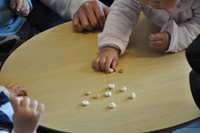
Give me bits of bread or rice grains when eating with you
Let me turn over thick pages of picture books made of cardboard or plastic

I begin to understand what you say and can ‘talk'
Stimulate my language development in daily life
I will imitate you to make sounds and babble in a long string. I hope you can understand what I am trying to say soon
When I am babbling, try to guess what I say and respond to me
I will point to the objects I want
When I look at or point to a “car”, say “car” for me. Repeat it to me and I shall learn the word more easily
I understand simple words like “bye bye” and “fly a kiss” with situational cues
I begin to understand what you ask me to do. e.g. when you ask “Where is Daddy?”, I will turn my head to daddy
When you talk to me, show me what you mean by using gestures and objects too. e.g. , waving your hand when saying “bye bye” or pointing to the shoes when saying “shoes”
I begin to understand what you ask me to do. e.g., I will give you the object in my hand when you say “Give it to Mammy”
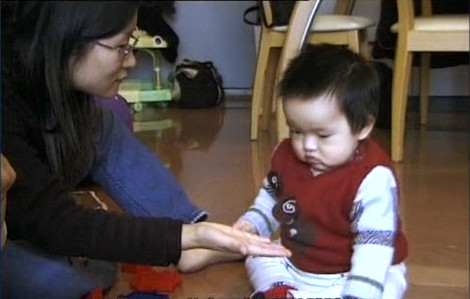
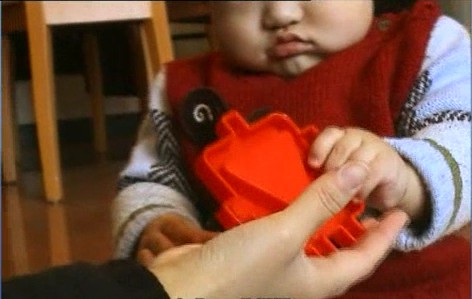
Name the pictures in the book for me when reading with me

Describe more to me what you are doing. Repeat in simple phrases, e.g. “Mummy is getting your food, meal time”. You can also help me learn about action words. e.g., you can say and gesture “comb” when holding a comb, or say and gesture “drink” when holding a cup
The best way to teach me how to talk is spending time to talk and play with me. Avoid letting me watch the electronic media. Although the constant flashing images on television and DVD are attractive to me, the messages are too fast for me. Don't give me these devices. I prefer playing and talking with you!

